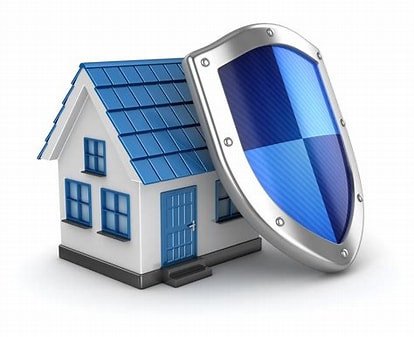Home security systems are designed to protect residences from unauthorized access, burglary, and other security threats. They utilize a combination of technologies and devices to monitor and secure homes, providing peace of mind to homeowners and occupants. Here’s a comprehensive summary of what a home security system typically includes:
Home Security System Summary
1. Components
- Sensors: Door and window sensors, motion detectors, glass break sensors, and vibration sensors detect unauthorized entry or suspicious activity.
- Control Panel: Central hub that manages and controls the entire security system, often equipped with a keypad or touchscreen interface.
- Cameras: Indoor and outdoor surveillance cameras capture video footage of the property, allowing remote monitoring via mobile apps or web interfaces.
- Alarms: Audible sirens, strobe lights, or silent alarms activate in response to security breaches, alerting occupants and deterring intruders.
- Access Control: Smart locks, keypads, or biometric systems control access to entry points like doors and gates.
- Monitoring Services: Professional monitoring services provide 24/7 surveillance and emergency response, dispatching authorities when alarms are triggered.
2. Key Features
- Remote Monitoring: Access live video feeds, receive alerts, and arm/disarm the system remotely via mobile apps or web interfaces.
- Customization: Configure settings, schedules, and notifications based on personal preferences and security needs.
- Integration: Connect with other smart home devices and platforms for enhanced functionality and automation.
- Backup Power: Battery or cellular backup ensures continuous operation during power outages or internet disruptions.
- Home Automation: Control lights, thermostats, and other devices remotely to simulate occupancy and enhance security.
- Two-Way Communication: Communicate with visitors or emergency responders through integrated speakers and microphones.
3. Installation and Setup
- DIY Installation: Many home security systems offer DIY installation options, allowing homeowners to set up and configure the system themselves.
- Professional Installation: Some systems require professional installation to ensure proper setup and integration with existing infrastructure.
- Configuration: Once installed, configure sensors, cameras, and other components according to the layout and security requirements of the home.
4. Monitoring Options
- Self-Monitoring: Homeowners monitor and manage the security system themselves, receiving alerts directly on their mobile devices.
- Professional Monitoring: Third-party monitoring services continuously monitor the system and respond to alerts on behalf of the homeowner, dispatching emergency services when necessary.
5. Benefits
- Crime Deterrence: Visible security measures like cameras and alarms deter potential intruders and burglars.
- Remote Access: Monitor and control the security system from anywhere, providing peace of mind while away from home.
- Emergency Response: Prompt notification and response to security breaches reduce the risk of property damage and personal harm.
- Insurance Discounts: Many insurance companies offer discounts on homeowners insurance premiums for homes equipped with security systems.
- Increased Property Value: A robust security system can enhance the value and desirability of a home for potential buyers.
6. Considerations
- Cost: Initial equipment costs, monthly monitoring fees, and potential installation fees vary depending on the system and provider.
- Compatibility: Ensure compatibility with existing smart home devices, network infrastructure, and mobile devices.
- Scalability: Choose a system that can accommodate future expansion and additional devices as security needs evolve.
- Reliability: Opt for reputable brands and reliable technologies to minimize false alarms and system malfunctions.
- Privacy: Understand data privacy and security implications, particularly with regard to video surveillance and remote monitoring.
7. Future Trends
- AI and Machine Learning: Integration of AI-driven analytics to enhance threat detection and reduce false alarms.
- Smart Sensors: Advanced sensors with environmental monitoring capabilities for detecting smoke, carbon monoxide, and other hazards.
- Voice Control: Integration with virtual assistants for hands-free control and voice commands.
- Facial Recognition: Enhanced security features like facial recognition for identifying authorized individuals and detecting intruders.
- Blockchain Security: Utilization of blockchain technology to enhance data privacy and security in home security systems.
Example of a Home Security System
Installation and Setup
- DIY Installation: John installs a home security system himself, mounting sensors on doors and windows, and placing cameras in strategic locations around his property.
- Configuration: Using the control panel and mobile app, John configures settings, schedules, and notifications based on his preferences and security needs.
Remote Monitoring and Control
- Remote Access: While away on vacation, John receives a notification on his smartphone alerting him to motion detected outside his front door.
- Live Video Feed: John accesses the live video feed from his outdoor camera to see a delivery person at the door and remotely unlock the door using his smart lock.
- Emergency Response: In the event of a break-in, the system triggers an alarm, and the monitoring service dispatches authorities to John's home.
Integration and Automation
- Integration with Smart Home Devices: John integrates his security system with his smart lights and thermostats, allowing him to automate lighting schedules and adjust temperature settings remotely.
- Voice Control: John uses voice commands via his virtual assistant to arm/disarm the security system and control other smart home devices.
 English
English
 العربية
العربية
 中文語言
中文語言
 हिंदी भाषा
हिंदी भाषा
 हespañol
हespañol
 русский
русский
 Português
Português
 Le français
Le français
 Deutsch
Deutsch
 ภาษาไทย
ภาษาไทย
 Português
Português


Comments
Muchas gracias. ?Como puedo iniciar sesion?
Add New Comment